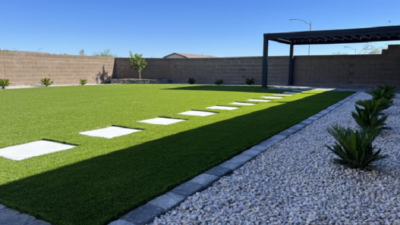The concept of online education can be dated back to the times almost a century ago when in Great Britain an instructor received student’s assignments via mail. There existed a time when correspondence courses were mostly accepted. But these courses still had drawbacks such as lack of interaction between teacher and student, lack of corrections and suggestions from teachers and more. These drawbacks of corresponding courses are solved by online education programs. Online programs allow students to interact not only with instructors in real-time but also with their peers.
United States – Pioneer of online education
Though we say necessity is the mother of all inventions, I would like to rephrase the statement as the United States is the mother of all innovations. This is because most of the advancements that we see in the world today have a forgotten predecessor in the United States. So is the case with online education as well.
- The first online education program was created in the United States. In 1960, at the University of Illinois, an intranet was created for students where they could listen to recorded lectures and also course materials. This later evolved into PLATO or the Programmed Logic for Automatic Teaching Operations. This technology later began to be used by thousands of terminals across the globe. Most social networking concepts today including message boards, chat rooms, screen sharing and more were developed with the learning acquired from the PLATO.
- The massively played educational game Lemonade stand was introduced in 1979, in the Apple II. The concept to create a successful lemonade stand was simple but the impact was great. A generation was introduced to the idea of learning of computers and specifically learning in virtual environments.
- The Electronic University Network was established in 1984 and later in 1986, the first online education course began. However, before the invention of the World Wide Web, students had to perform all their educational queries over the telephone network. The EUN and the America Online began collaborating in 1992.
- Companies such as America Online, Delphi, CompuServe, and a few other local internet providers helped in transforming personal computers into windows to the world. The offline adult learning center called CALC ( Computer Assisted Learning Center ) offered the first online courses. These courses were supplemented with real-time instruction and interaction.
- It was in 1997 that the California Virtual University was established. Moreover, the Journal of Asynchronous Learning Networks provides a dedicated space for online learning.
- Online mode of education began to be practiced in the MIT in 2002, free of any cost. As of 2010, MIT offers over 2000 undergraduate and graduate courses. Online courses became so popular that almost 5.5 million students across the world are part of at least one online course. There are thousands of other online colleges in the United Statesas well.
Future enhancements of online learning
Some of the predicted enhancements of online learning are as follows.
- Learning today has shifted to smaller platforms than a desktop or a laptop. This would help in learning and at any time. Thus mobile-learning is the most acceptable mode of learning these days.
• No learning is complete without hands-on experience and no skill is imparted by just bookish knowledge. Online learning coupled with practical knowledge can create the best possible students for the future.
• A single online classroom can hold students from across the globe. Thus in online learning, we redefine boundaries and hence create an environment of brotherhood.
• In a blended learning environment, the original classroom sessions are combined with online learning methodologies so as to create more teacher-student interaction sessions inside the classroom.
• Adaptive learning technology is combined with online education programs in order to cover up the drawback of reduced teacher-student interaction in an online environment.
Transformation of ‘autodidacticism’ to online learning
Autodidact in the yesteryears is a person who chose to learn himself without the help of masters or instructors. Formal education is never a must for an autodidact. Several famous people including Tony Silva, Charlotte Perkins Gilman, Suzanne Valadon, Benjamin Kidd and Rabindranath Tagore were autodidacts. Being an autodidact in the old days meant a lot of hard work involved in collecting resources, meeting experts, and more.
Each student at some phase of his/her life is an autodidact. The plethora of online resources has improved this attraction towards self-learning. We have transformed our life’s experiences into timelines in social media. More words are today attached with the prefix virtual. Let loose the autodidact in you to make the best out of all the digital years that you live.










Comments